 |
|||||||||
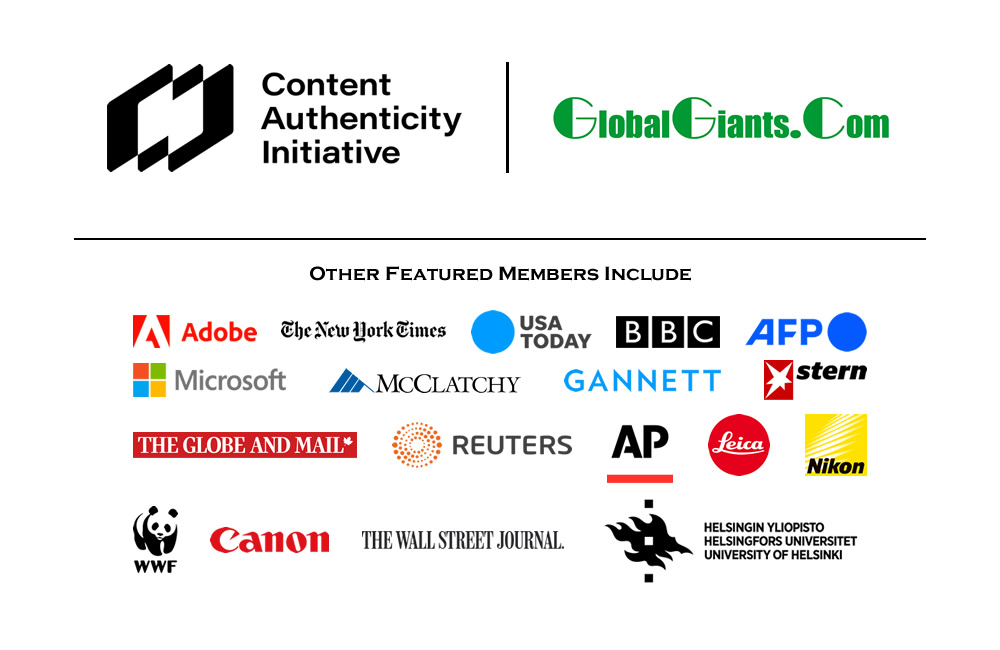



 |
|||||||||




⢠India has become the 60th country to approve Sputnik V.
⢠Sputnik V is one of only three vaccines registered in India.
⢠The Russian vaccine has been approved for use in countries with a total population of 3 billion.


Photo: SPUTNIK V VACCINE.
MOSCOW, April 13, 2021 — The Russian Direct Investment Fund (RDIF, Russia’s sovereign wealth fund) announces that India’s Drug Controller General (DCGI) has approved the use of the Russian Sputnik V vaccine against coronavirus in the country. India has become the 60th country to support Sputnik V.
Sputnik V is one of only three coronavirus vaccines registered by India’s regulatory authorities.
India is the most populated country to register the Russian vaccine. The total population of 60 countries where Sputnik V is approved for use is 3 billion people, or about 40% of the global population.
India has registered the vaccine under the emergency use authorization procedure based on clinical trial results in Russia and positive data of additional Phase III local clinical trials in India conducted in partnership with Dr. Reddy’s Laboratories.
India is the leading production hub for Sputnik V. RDIF has reached agreements with the top pharmaceutical companies in the country (Gland Pharma, Hetero Biopharma, Panacea Biotec, Stelis Biopharma, Virchow Biotech) aimed at the production of more than 850 million doses per year.
Sputnik V ranks second among coronavirus vaccines globally regarding the number of approvals issued by government regulators.
Sputnik V has also been approved in Russia, Belarus, Argentina, Bolivia, Serbia, Algeria, Palestine, Venezuela, Paraguay, Turkmenistan, Hungary, UAE, Iran, Republic of Guinea, Tunisia, Armenia, Mexico, Nicaragua, Republika Srpska (an entity of Bosnia and Herzegovina), Lebanon, Myanmar, Pakistan, Mongolia, Bahrain, Montenegro, Saint Vincent and the Grenadines, Kazakhstan, Uzbekistan, Gabon, San-Marino, Ghana, Syria, Kyrgyzstan, Guyana, Egypt, Honduras, Guatemala, Moldova, Slovakia, Angola, Republic of the Congo, Djibouti, Sri Lanka, Laos, Iraq, North Macedonia, Kenya, Morocco, Jordan, Namibia, Azerbaijan, Philippines, Cameroon, Seychelles, Mauritius, Vietnam, Antigua and Barbuda, Mali, and Panama.
Kirill Dmitriev, CEO of the Russian Direct Investment Fund, said:
“We appreciate the decision of India’s regulatory bodies to grant authorization for Sputnik V. Approval of the vaccine is a significant milestone as Russia and India have been developing extensive cooperation on clinical trials of Sputnik V in India and its local production.
“The Russian vaccine has efficacy of 91.6% and provides complete protection against severe cases of COVID-19 as demonstrated by the data published in one of the leading medical journals, The Lancet.
“India is a vaccine-manufacturing hub and our strategic partner for the production of Sputnik V. We have created partnerships with several Indian leading pharmaceutical companies for Sputnik V production, which will provide for both vaccinations of the population in India and global distribution. Over 850 million doses of Sputnik V are going to be produced in India annually sufficient to vaccinate more than 425 million people around the world.”
⢠According to RDIF, Sputnik V has many key advantages:
Efficacy of Sputnik V is 91.6%, as confirmed by the data published in the Lancet, one of the world’s oldest and most respected medical journals; it is one of only three vaccines in the world with an efficacy of over 90%; Sputnik V provides complete protection against severe cases of COVID-19.
The Sputnik V vaccine is based on a proven and well-studied platform of human adenoviral vectors, which cause the common cold and have been around for thousands of years.
Sputnik V uses two different vectors for the two shots in vaccination, providing immunity with a longer duration than vaccines using the exact delivery mechanism for both shots.
More than 250 clinical studies have proved the safety, efficacy, and lack of adverse long-term effects of adenoviral vaccines over two decades. There are no strong allergies caused by Sputnik V.
The storage temperature of Sputnik V at +2+8 C means that we can store it in a conventional refrigerator without any need to invest in additional cold-chain infrastructure.
Sputnik V’s price is less than $10 per shot, making it affordable worldwide.
Russian Direct Investment Fund (RDIF) is Russia’s sovereign wealth fund established in 2011 to make equity co-investments, primarily in Russia, alongside reputable international financial and strategic investors.
Source: Russian Direct Investment Fund (RDIF)
|GlobalGiants.Com|
Edited & Posted by the Editor | 11:13 AM | View the original post
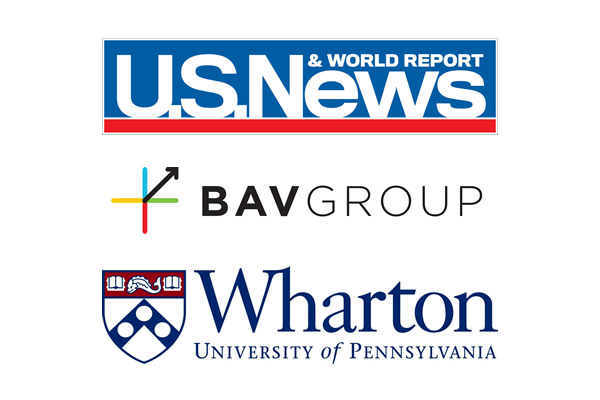
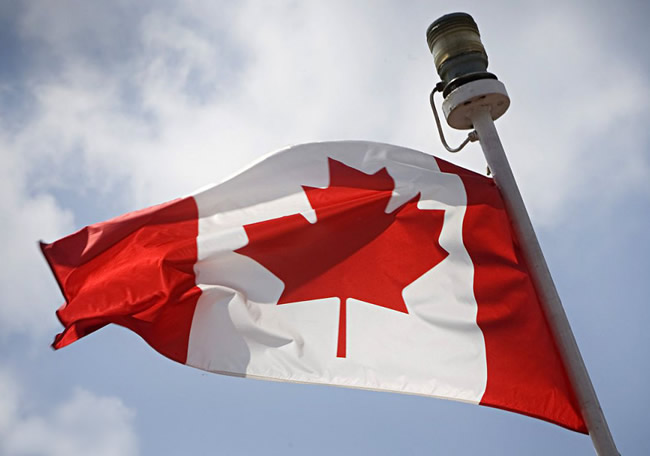
Photo: The National Flag of Canada. Image Credit: Statschew.
WASHINGTON, April 13, 2021 — For the first time, Canada takes the top spot overall in the 2021 Best Countries Report, a ranking and analysis project by U.S. News & World Report; BAV Group, a unit of global marketing communications company VMLY&R; and the Wharton School of the University of Pennsylvania.
Cultural, economic, political, and technological influences remain essential. The report has added two new categories: social purpose and agility. Together, this broad range of types determines how the 78 countries studied are ranked on the world stage.
“Nations are impacted on many critical fronts by how they are perceived globally - from foreign relations to international business to tourism. These perceptions are ever-evolving in a rapidly changing world,” said Kim Castro, editor, and chief content officer at U.S. News. “The 2021 Best Countries analysis combines data and storytelling to explore how countries compare on a host of global issues.”
⢠Key themes from the 2021 Best Countries Report:
For the first time, Canada is the No. 1 overall country. Japan and Germany finish Nos. 2 and 3, respectively, while Switzerland, the previous No. 1 overall country, falls to No. 4. Australia remains the No. 5 overall, followed by the United States, which rises one position to No. 6 overall.
Canada ranks No. 1 in quality of life and social purpose. It is also perceived as having a good job market, caring about human rights, and is committed to social justice. Additionally, the country finished No. 1 in being viewed as not corrupt and respecting property rights.
Social justice is a global ambition. Eighty percent of global citizens feel aligned with social justice, a broad term that refers to movements calling for addressing racial and gender inequities. Simultaneously, 76% agree that a country is stronger when it is more racially and ethnically diverse. Canada and the Nordic countries are viewed as the most committed to social justice, while the U.S. sits at No. 18. And on the specific topic of racial equality, the U.S. only manages to achieve No. 69, behind both China and Iraq.
Women are viewed as influential leaders. Eighty-three percent of global citizens believe there is a leadership crisis in the world today. The majority of respondents view women leaders positively, as 68% agree that countries led by women tend to be better managed.
A nation’s perceived agility is the most crucial driver of strength in 2021. Across the countries measured, agility accounts for per capita GDP variations the most - underscoring that any country needs to be seen as adaptable, progressive, and responsive. The new Agility sub-ranking carries the most significant weight among the ten sub rankings. The U.S. leads the world in perceived agility but is not among the top 10 in adaptability, coming in at No. 13 on this attribute.
“This year, the model behind the Best Countries report has been updated and evolved in response to 2020, a year like no other,” said John Keaveney, WPP advisor and head of Analytics & Insight, BAV Group. “By combining more traditional measures of a nation’s power and influence with our new dimensions of Social Purpose and Agility, we are now able to more accurately measure the strength and perceptual equity of any country in 2021.”
The 2021 Best Countries rankings methodology gathered from a proprietary survey of more than 17,000 business leaders; college-educated individuals who are middle-class or higher; and general citizens who are nationally representative of their country. “Countries should care about their image - it is not just a beauty contest. The impressions others have of a country affects its economy through tourism, foreign trade, and foreign direct investment,” said David Reibstein, professor of marketing at the Wharton School.
The Best Countries project includes in-depth news articles, an interactive data explorer, photos, and commentary from global experts in government, business, and academia. It is part of the U.S. News’ Government Rankings initiative, which measures government performance at the international, state, and local levels and includes the Best States and Healthiest Communities projects.
⢠Best Countries Overall Rankings 2021
⢠10 Most Powerful Countries 2021
â¢10 Most Agile Countries 2021
U.S. News & World Report is a global leader in quality rankings that empower people to make better, more informed decisions about important issues affecting their lives. Founded in 1933, U.S. News has its headquarters in Washington, D.C.
BAV Group is a global consultancy with expertise in consumer insights and brand marketing strategy.
The Wharton School of the University of Pennsylvania, founded in 1881, was the first collegiate business school. It is recognized globally for intellectual leadership and ongoing innovation across every major discipline of business education. With a broad global community and one of the most published business school faculties, Wharton creates its economic and social value worldwide.
Source: U.S. News & World Report
|GlobalGiants.Com|
Edited & Posted by the Editor | 8:07 AM | View the original post
The world’s premier interfaith convening organization invites program proposals for its 8th global gathering focused on the theme “Opening our Hearts to the World: Compassion in Action.”


Photo: Chicago. Image Credit: Cédric Chapuis.
CHICAGO, April 10, 2021 — The Parliament of the World’s Religions, the world’s premier interfaith convening, has invited proposals for programs, presentations, and religious observances at the 2021 Parliament of the World’s Religions, to be held virtually, October 17-18.
Parliament convenings have featured luminaries such as H.H. Dalai Lama, President Nelson Mandela, President Jimmy Carter, Shirin Ebadi, and United Nations Messenger of Peace Dr. Jane Goodall. The 2021 Parliament Call for Programs provides featured presenters the opportunity to join a historical group of select scholars, activists, and religious and spiritual leaders from around the world.
The Call for Programs for the Parliament of the World’s Religions opened on Friday, April 2, inviting people of faith and conscience worldwide to propose a program, presentation, or religious observance for the upcoming 2021 Parliament of the World’s Religions. The program would acknowledge the setbacks and hardships the people around the world are currently facing. It would reflect the critical hope and compassion offered by the world’s faith and spiritual traditions in healing, restoration, and the promise of a just, peaceful and sustainable future.
The theme of the 2021 Parliament is “Opening our Hearts to the World: Compassion in Action.” This theme aims to encompass the global opportunity provided by the virtual nature of the 2021 Parliament and the significant emotional and spiritual needs of people around the world. It acknowledges the critical need for a just and compassionate plan to move the world forward.
The Parliament has invited diverse peoples of faith, conscience, and spirituality to share their hopes and hearts with the global interfaith movement. Interested organizations and individuals can propose panels, lectures, oral presentations, academic papers, seminars, religious & spiritual observances, workshops & training, art, films, virtual tours, music, and performances.
The 2021 Parliament of the World’s Religions provides a cost-effective way to maximize an organization’s exposure to thousands of participants from 80 different countries and over 50 faith and spiritual traditions by serving as a sponsor and exhibitor. Individuals can network with leaders from communities worldwide and connect with thousands of multi-generational, media-savvy, and culturally aware participants, the organization stated.
The Parliament of the World’s Religions’ origins is rooted in the 1893 World’s Columbian Exposition in Chicago. Its historic first convening created a global platform for the engagement of religions of the east and west. The 1893 World Parliament of Religions marked the first formal gathering of representatives of Eastern and Western spiritual traditions. A variety of spiritual leaders from around the world came to share their perspectives and engage in dialogue. Here, a captivating Hindu monk from India, Swami Vivekananda, addressed 5,000 assembled delegates, greeting them with the words, “Sisters and brothers of America!”
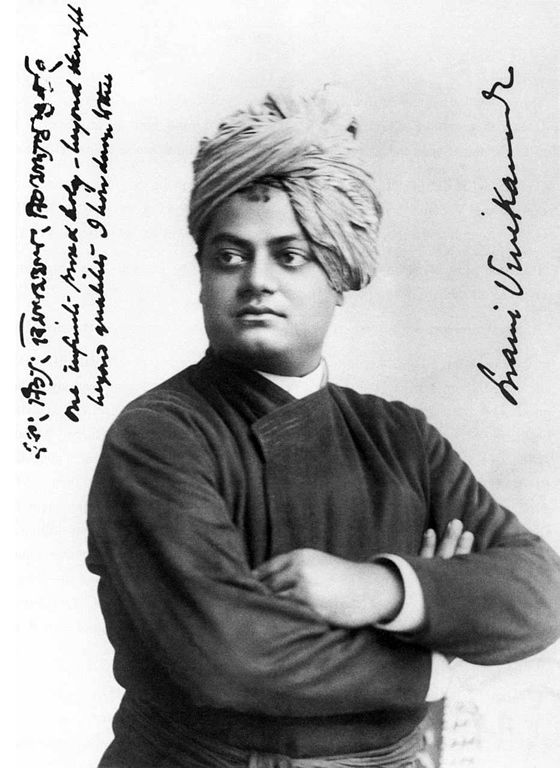
Photo: Vivekananda in Chicago, September 1893. Signed Photograph.
Headquartered in Chicago, Il, USA, the World Religions Parliament is an international NGO affiliated to the United Nations Department of Public Information. It cultivates harmony among the world’s spiritual traditions and fosters their engagement with guiding institutions to achieve a more peaceful, just, and sustainable world.
Source: The Parliament of the World’s Religions, Chicago.
|GlobalGiants.Com|
Edited & Posted by the Editor | 3:47 AM | View the original post
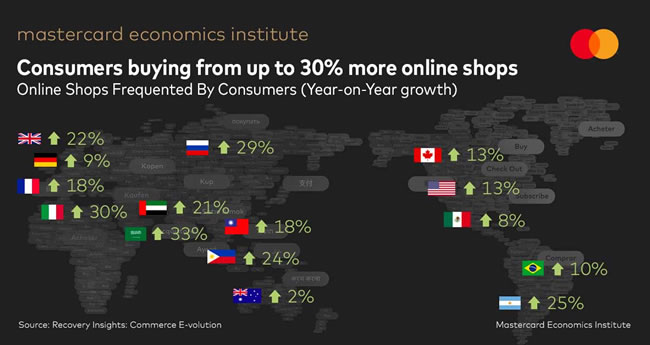
Infographic: Consumers are increasing their e-commerce footprints, buying from up to 30% more online retailers.

Photo: Retail. Garments Shop. Image Credit: Roman K.
As Covid-19 kept consumers worldwide at home, they purchased nearly everything from groceries to gardening supplies online. According to Mastercard’s latest Recovery Insights report, this amounted to an additional $900 billion spending in retail online around the world in 2020.
For retailers, restaurants, and other businesses large and small, selling online provided a much-needed lifeline as in-person consumer purchasing got disrupted.
Roughly 20-30% of the Covid-related shift to digital globally is expected to be permanent, according to “Mastercard’s Recovery Insights: Commerce E-volution.” The report draws on anonymized and aggregated sales activity in the Mastercard network and proprietary analysis by the Mastercard Economics Institute. The research dives into what this means by country, sector, goods & services, within countries, and across borders.
“While consumers got stuck at home, their dollars traveled far and wide thanks to e-commerce,” says Bricklin Dwyer, Mastercard chief economist and head of the Mastercard Economics Institute. “This has significant implications, with the countries and companies that have prioritized digital continuing to reap the benefits. Our analysis shows that even the smallest businesses see gains when they shift to digital.”
While the digital transformation has been neither universal nor consistent due to geographical, economic, and household differences, the report uncovers several critical overarching trends:
Early digital adopters go into overdrive: Economies that were more digital before the crisis, such as the UK and US, saw more significant gains in the domestic shift to digital. That shift looks more permanent than the countries with a smaller share of e-commerce before the crisis, such as Argentina and Mexico. Asia Pacific, North America, and Europe were the most vital regions in driving e-commerce adoption.
Grocery and discount store digital gains look sticky: Essential retail sectors, which had the smallest digital share before the crisis, saw some of the most significant improvements as consumers adapted. With new consumer habits forming and given the low pre-Covid user base, we anticipate 70-80% of the grocery e-commerce surge to stick around for good.
International e-commerce rose 25-30% during the pandemic: International e-commerce got a boost in sales volume and the number of different countries where shoppers placed orders. With infinitely more choices at their fingertips, consumer spending on international e-commerce grew around 25-30% year over year from March 2020 through February 2021.
Consumers increase their e-commerce footprints, buying from up to 30% more online retailers: Reflecting expanded consumer choice, Mastercard’s analysis shows that consumers worldwide are making purchases at a more significant number of websites and online marketplaces than before. On average, residents in countries like Italy and Saudi Arabia are buying from 33% more online stores, followed closely by Russia and the UK.
Shift to electronic payments accelerated in the US: Even in stores, Covid-19 accelerated the transition to digital—with more consumers moving from plunking down cash to touch-free payments. According to Mastercard’s analysis of payment forms at brick-and-mortar retail stores and restaurants, non-cash payments jumped by an additional 2.5 percentage points beyond the ongoing trend. It led to an acceleration of the shift from cash to electronic payments by a full year.
Mastercard launched Recovery Insights last year to help businesses and governments better manage the health, safety, and economic risks presented by Covid-19. The initiative utilizes Mastercard’s analytics and experimentation platforms, its longstanding consulting practice, and unique data-driven insights to deliver relevant and timely tools, innovation, and research.
The report draws on anonymized and aggregated sales activity in the Mastercard network and proprietary analysis by the Mastercard Economics Institute.
Source: Mastercard
|GlobalGiants.Com|
Edited & Posted by the Editor | 6:25 AM | View the original post
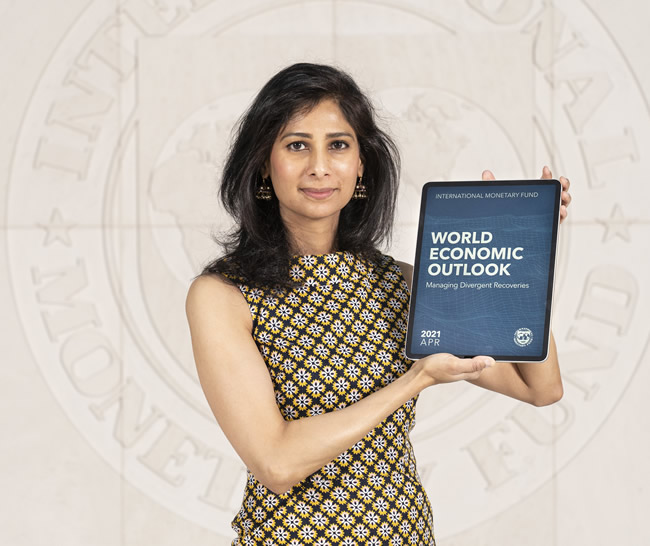
Photo: Chief Economist Gita Gopinath poses before giving the World Economic Outlook during the 2021 Spring Meetings of the International Monetary Fund. April 6, 2021. Washington, DC, United States. IMF Photo/Joshua Roberts.
Washington, DC, April 6, 2021 — The IMF announced an upgrade to global growth in its World Economic Outlook on Tuesday (April 6) in Washington, DC.
IMF has projected that the global economy would grow at 6 percent in 2021, moderating to 4.4 percent in 2022. A significant turnaround from an estimated contraction of -3.3 percent in 2020 when a pandemic hit the world.
“So relative to our January forecast, we are upgrading growth to 6% for 2021 and 4.4% for 2022. It reflects the additional financial support provided in the United States and the vaccination efforts that will strengthen recovery in the second half of this year. It also reflects the continued resilience of economic activity to the pandemic in many parts of the world,” said IMF chief economist Gita Gopinath.
Gopinath stressed that a high degree of uncertainty surrounds the IMF’s projections as the pandemic is yet to be defeated and virus cases are accelerating in many countries.
That’s leading to diverging recoveries both across and within countries, as economies with slower vaccine rollout, more limited policy support, and more reliant on tourism do less well.
“The biggest risk right now is still the pandemic. If there are new virus variants that evade the vaccine, it could lead to a sharp downgrade. But if, on the other hand, there’s the faster rollout of vaccinations, then that could uplift the outlook,” said Gopinath.
She also added that multispeed recoveries could pose financial risks if interest rates in the United States rise further in unexpected ways. It could cause inflated asset valuations to unwind in a disorderly manner, economic conditions to tighten sharply, and recovery prospects to deteriorate, especially for some highly leveraged emerging markets and developing economies.
“The second big risk is to financial conditions. We see multispeed recoveries, and we have seen interest rates go up. If interest rates go up even further in a more disorderly fashion than that could have negative implications for several countries, especially for some highly vulnerable emerging and developing economies,” said Gopinath.
Policymakers will need to continue supporting their economies while dealing with more limited policy space and higher debt levels than before the pandemic, Gopinath added. It requires better-targeted measures to leave room for prolonged support if needed.
“Given that we are not out of the woods, it is crucial for policy support to be continued in this crisis. Of course, countries are dealing with high debt levels, so they’ll have to make sure this support is better targeted and well-tailored to countries’ specific economic conditions, the stage of the recovery they are in, and the structural characteristics of the economy,” she added.
She also urged central banks to keep access to money open in the current environment.
“Monetary policy should also remain accommodative while proactively addressing financial risks of using macroprudential tools,” Gopinath remarked.
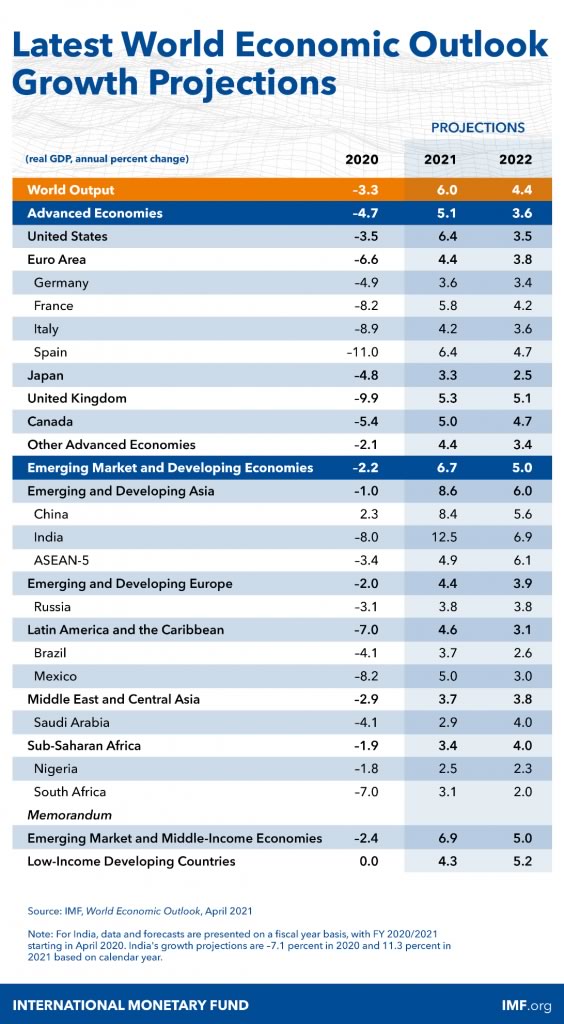
Source: IMF
|GlobalGiants.Com|
Edited & Posted by the Editor | 11:25 AM | View the original post
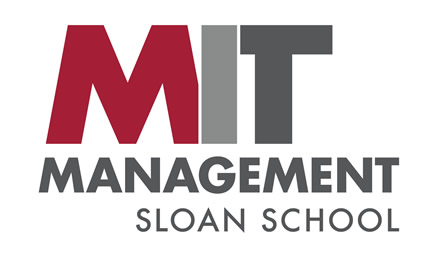
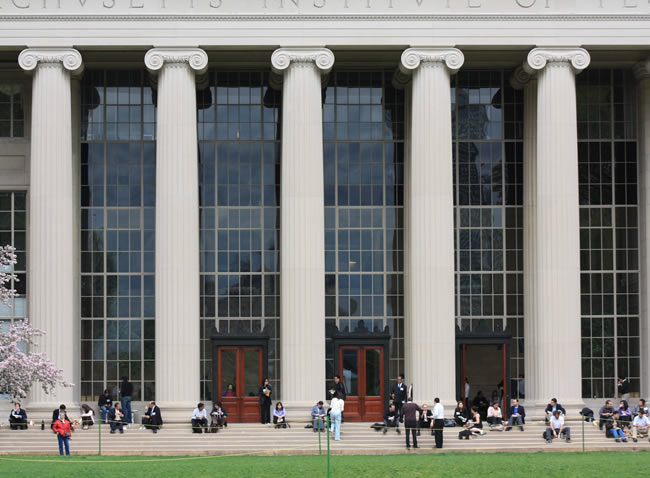
Photo: Massachusetts Institute of Technology (MIT) Building. Image credit: Ulrick.
CAMBRIDGE, Mass., April 5, 2021— MIT Sloan School of Management recently announced that Senior Lecturer Chintan Vaishnav was appointed to serve as mission director of India’s Atal Innovation Mission. The Mission, housed at NITI Aayog, is the Government of India’s flagship initiative to create and promote a culture of innovation and entrepreneurship.
Vaishnav says, “At the highest level, the work of building a culture of innovation is one of engaging creativity in the service of humankind. India is a place of limitless creative potential. I am excited for the opportunity to help harness this potential.”
Over the past six years, Vaishnav has worked and lived in rural to very rural India for a total of 18 months, researching challenges related to agriculture, water, and livelihood. His research has produced solutions such as on-farm soil nutrient management and water quality testing and purification that bring world-class science and technology to underserved communities at an affordable price. His water work has turned into an early-stage startup that enables communities to keep their water safe.
“This experience has taught me how to innovate for the developing world with rigor and relevance. I hope to bring this culture to my new position as mission director,” he says.
A member of the MIT Tata Center for Technology and Design founding team, Vaishnav also designed and taught a graduate-level course on Technology, Design, and Entrepreneurship for Emerging Community. The system has trained 200 graduate students from 18 different MIT departments and has guided a total of 200,000 hours of fieldwork in India, Nepal, and Africa. The work has produced 45 patents, 12 commercial licenses, and 11 startups, some of which he advises.
Vaishnav says, “This experience has taught me how to engage young minds in solving some of our most pressing challenges in a hands-on, action-oriented way. I hope to create similar engagement as mission director.”
Before MIT, Vaishnav worked at Bell Labs, designing innovative products for high-speed networks. This work led to his Ph.D. research on how regulators can balance compliance and innovation as new technologies disrupt the traditionally regulated ones in the Internet space. Since then, Vaishnav has advised the Office of Science and Technology Policy (OSTP) at the White House, the Federal Communications Commission (FCC), the Telecom Regulatory Authority of India (TRAI). He has also worked with several large communications companies that are members of MIT’s Communications Futures Program.
Vaishnav holds a Master’s degree in Technology and Policy and a Ph.D. in Engineering Systems from MIT. He joined the MIT Sloan faculty as a senior lecturer after finishing his Ph.D. In addition to his degrees from MIT, he holds a BA in Indian Classical Music from Gandharva Mahavidyalaya, India.
“My new assignment speaks directly to MIT Sloan’s Mission of developing leaders who make a positive difference in the world. MIT Sloan has been a global leader in innovation and entrepreneurship, and this opportunity helps take this work to a nation of 1.3 billion people via the Atal Innovation Mission,” says Vaishnav, who will be on a two-year leave from MIT to serve as Mission Director.
Source: MIT Sloan School of Management
|GlobalGiants.Com|
Edited & Posted by the Editor | 12:35 PM | View the original post
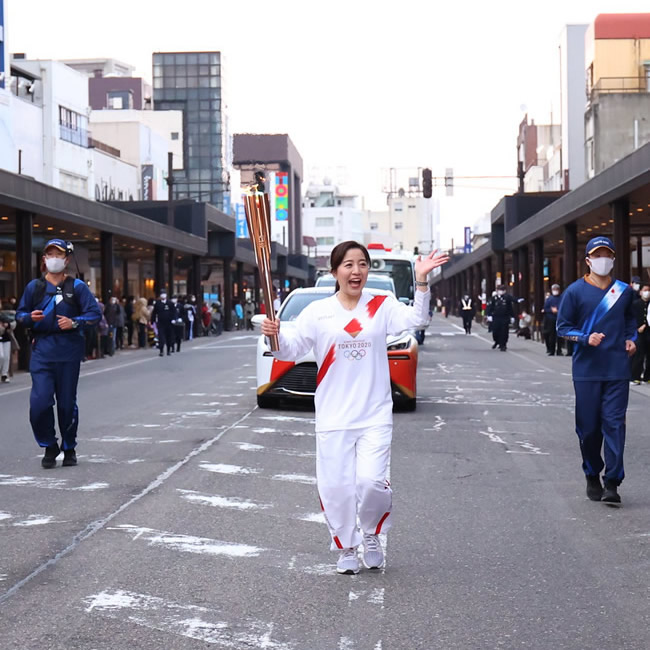
Photo: The Olympic Torch Relay, Fukushima, JAPAN - March 26, 2021. Image provided by & copyright © 2021 - International Olympic Committee.
Tokyo, March 28, 2021 — The Tokyo 2020 Olympic Torch Relay started in Fukushima, Japan, on March 25, 2021. It will travel through all of the country’s 47 prefectures over the next 121 days before arriving in Tokyo for the Olympic Games Opening Ceremony on July 23.
The route, which is unchanged from a year ago when the Games got postponed, will see the Olympic flame travel through 859 municipalities, passing within a short distance of most Japanese populations.
The flame’s journey began in the J-Village national football training facility in Naraha, Fukushima, one of several areas badly hit by the 2011 Great East Japan Earthquake. This particular location is befitting Tokyo 2020’s Olympic Torch Relay concept - “Hope Lights Our Way,” reflecting the Olympic flame’s symbolism of hope and peace, which is particularly relevant considering the challenges both within Japan and across the world in recent times.
The honor of becoming the first torchbearer goes to Nadeshiko, Japan, the football team that won the 2011 FIFA Women’s World Cup. Their victory played an essential role in uplifting the nation still reeling from the aftermath of the disaster that year.
Over 10,000 torchbearers, hand-selected from over half-a-million applicants, will be responsible for carrying the Olympic flame on its journey across Japan. “Each torchbearer will celebrate the best in each of us - chosen for their ability to overcome adversity. They will be part of a unique Olympic Torch Relay aimed at uniting people around messages of supporting, accepting, and encouraging one another, illustrating how much stronger we are together,” said IOC.
Cherry blossom, a pink gold flower synonymous with Japanese spring, has inspired the torch design. It also embodies Tokyo 2020’s commitment to sustainability. Approximately 30 percent of the torch is made from recycled aluminum used for temporary housing after the 2011 earthquake and tsunami. Hydrogen, which emits no carbon dioxide when burned, will fuel the torch for selected legs of the Relay. Besides, torchbearers will get outfitted with uniforms made from recycled plastic bottles collected by Olympic Worldwide Partner Coca-Cola.
The Olympic flame first touched down in Japan on March 20, 2020, at Matsushima Airbase in Miyagi, after being lit in Greece at Ancient Olympia. Following the Games’ postponement to 2021, the Olympic flame found a home at Tokyo’s new Olympic Museum. From there, it visited 14 Prefectures and 86 municipalities, welcomed with great enthusiasm by the Japanese public and media wherever it went. The flame received over 62,000 visitors.
Source: International Olympic Committee
|GlobalGiants.Com|
At the Winter Olympics 2018 in PyeongChang, Evgenia Medvedeva performed her Short Program in Figure Skating to Dario Marianelli’s “Dance With Me,” known from the movie “Anna Karenina.”
Edited & Posted by the Editor | 6:43 AM | View the original post
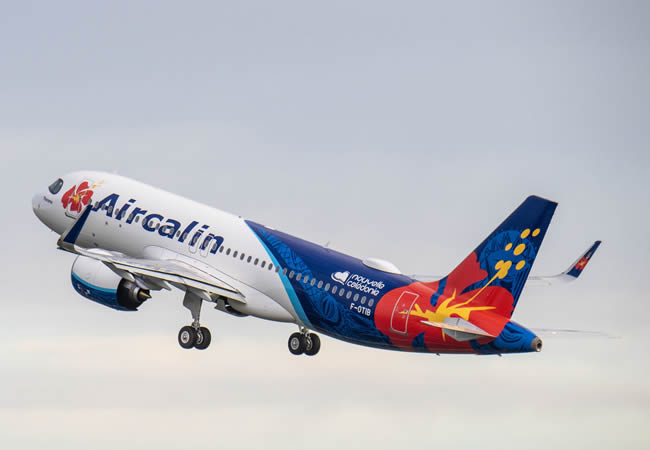
Photo: Airbus Aircalin A320neo on ferry flight. Image provided by & copyright © AIRBUS.

Photo: Royal Caribbean Adventure of the Seas in Bar Harbor, Maine. Image Credit: Corey Seeman.
⢠Joint Statement from International Civil Aviation Organization (ICAO), International Labour Organization (ILO), International Maritime Organization (IMO), International Organization for Migration (IOM), and World Health Organization (WHO) â¢
Geneva, March 25, 2021.
The coronavirus (COVID-19) pandemic has triggered devastating consequences for human life and the global economy. Maritime and air transport are essential activities that underpin worldwide trade and mobility and are critical to a sustainable socio-economic recovery.
Maritime transport moves More than 80% of global trade by volume. The global economy depends on the world’s 2 million seafarers who operate the global fleet of merchant ships. Travel restrictions imposed during the pandemic have severely impacted the Seafarers. Some 400,000 seafarers are stranded on board commercial vessels, long past their contracts’ expiry. A similar number of seafarers urgently need to join ships to replace them.
Passenger air transport carried about 5.7 billion passengers in 2019, while airfreight represents 35% of the value of goods shipped in all modes combined. According to ICAO personnel statistics, the total number of licensed aviation professionals, including pilots, air traffic controllers, and certified maintenance technicians, was 887,000 in 2019. The application of stringent public health rules to aircrew, including quarantine, has resulted in hindered connectivity, operational complexity, and high cost.
Maritime and air transport rely on seafarers and aircrew. They are vital workers required to travel across borders at all times, resulting in the need for them to present proof of a COVID-19 vaccination as a condition for entry in some countries. It is despite WHO’s recommendation that, at present, governments should not introduce requirements of proof of immunization for international travel as a condition of entry, as there are still critical unknowns regarding the efficacy of vaccination in reducing transmission and limited availability of vaccines. For shipping and air transport to continue to operate safely, governments must facilitate seafarers’ safe cross-border movement. We reiterate our call upon countries that have not done so to designate seafarers and aircrew as crucial workers.
With this statement, our organizations also call on governments to prioritize seafarers and aircrew in their national COVID-19 vaccination programs, together with other essential workers, per the advice from the WHO SAGE Roadmap for prioritizing the use of COVID-19 vaccines in the context of limited supply published in November 2020. Seafarers and aircrew need to be protected through vaccination as soon as possible to facilitate their safe movement across borders. We also call on governments to identify and prepare for the challenges of COVID-19 vaccination of seafarers and aircrew, particularly for seafarers spending long periods away from their home country.
Our organizations fully support the timely development of an internationally harmonized framework for vaccination certificates to facilitate international travel for seafarers and aircrew.
WHO has established a Smart Vaccination Certificate working group. It works to ensure that digitalized versions of vaccine certificates are interoperable. The UN Crisis Management Team for COVID-19, under the leadership of WHO, has recognized that all countries should consider seafarers and aircrew who are required to travel across borders during the pandemic for essential allocation of vaccines.
We invite governments and other stakeholders to bring this joint statement’s contents to the competent authorities’ attention and all parties concerned.
Source: WHO
|GlobalGiants.Com|
Edited & Posted by the Editor | 4:29 AM | View the original post
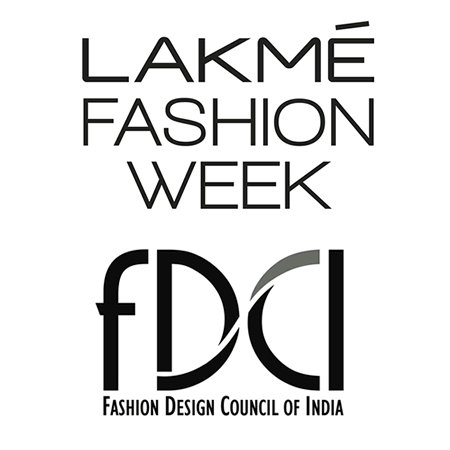

Photo: A presentation by Abirr nü Nanki on March 20, 2021, at FDCI x Lakmé Fashion Week. Image provided by & copyright © Lakmé Fashion Week.
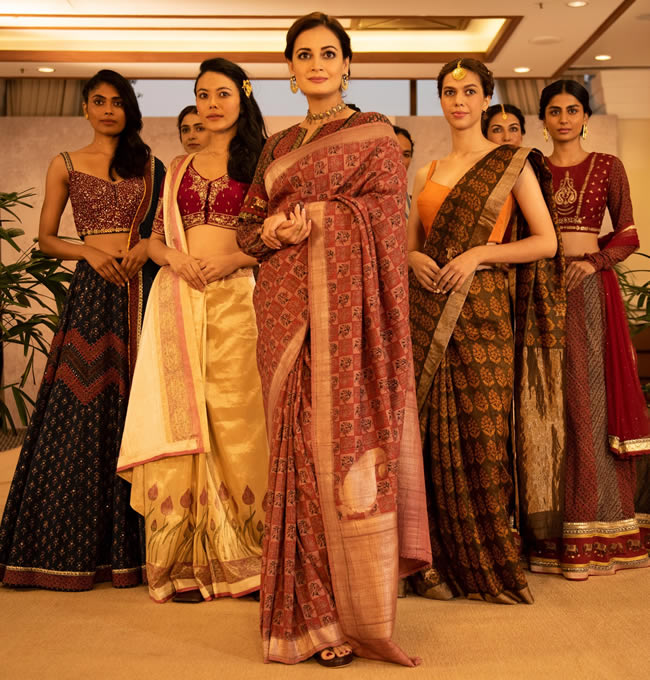
Photo: Presenting Dia Mirza as the showstopper for ‘The Fusion Edit’ by Taneira Sarees at FDCI x Lakmé Fashion Week. Image provided by & copyright © Lakmé Fashion Week.

Photo: Hina Khan at FDCI x Lakmé Fashion Week. Image provided by & copyright © Lakmé Fashion Week.
Mumbai, March 21, 2021: Combining forces of the powerhouses of fashion & Beauty in India, Lakmé, Fashion Design Council of India (FDCI), and RISE Worldwide, presented the Lakmé Fashion Week, 16-21 March 2021.
Lakmé Fashion Week, in partnership with the Fashion Design Council of India (FDCI), had a schedule comprising the best of curation and designers from Delhi, Mumbai, and across India. FDCI & Lakmé Fashion Week jointly presented the Opening Show on March 16, culminating with the Lakmé Absolute Grand Finale on March 21.
Anamika Khanna opened the fashion week with a virtual showcase jointly presented by FDCI and LFW.
Ace designers Suneet Varma, S&N by Shantanu and Nikhil, Payal Pratap, Samant Chauhan, Geisha Designs by Paras & Shalini, Nitin Bal Chauhan, Siddartha Tytler, Pawan Sachdeva, Nidhi Yasha, Limerick by Abirr n’ Nanki, Nirmooha graced the platform along with a ‘fusion edit’ by Taniera from the House of Tata.
TRESemmé presented a sustainable collection by Ritu Kumar.
FDCI presented Bloni as the Emerging Talent showcase of the season.
INIFD presents Gen Next winners Label Rahul Dasgupta by Rahul Dasgupta and Raffughar by Wajahat Rather.
Showcases included a unique collaboration with ‘PETA’ and a showcase of Peace Silk by ‘Cocccon.’
Six innovative fashion entrepreneurs competed for India’s most significant sustainable fashion award - Circular Design Challenge 3.0 presented by R Elan “Fashion for Earth” in association with United Nations Environment Programme.
Natural Diamond Council launched a global trend report highlighting significant trends around jewelry and accessories.
The event also promoted modeling talent through FDCI’s #GetNoticed Model Hunt.
A non-profit organization, the Fashion Design Council of India (FDCI), is the apex body of fashion design in India, represented by over 400 members. It promotes, nurtures, and represents the best fashion and design talent in the country, and its prime objective is to propagate the business of fashion.
Lakmé is India’s No.1 cosmetics & beauty services brand. It was also the country’s first cosmetic brand to introduce makeup to Indian women and take pride in being an expert on Indian Beauty for over 50 years.
Ashwath Swaminathan, Head of Innovations at Lakmé, said, “Our association with the Indian fashion industry runs deep as Lakmé has been a critical driver of its growth for the past 20 years. We look forward to this partnership opening up new avenues of growth for all stakeholders. We continue to remain faithful to the pillars of the Lakmé Fashion week as we present the best in Indian fashion & Beauty this season to a global audience.”
Sources: Fashion Design Council of India (FDCI), Lakmé Fashion Week.
|GlobalGiants.Com|
Presentation from fashion designer Samant Chauhan
Edited & Posted by the Editor | 11:31 AM | View the original post

Photo: Berlin. Watch-traffic lights. Berlin is a UNESCO Creative City of Design. Image credit: Aleksander Markin.

Photo: Gateway of India, Mumbai. Mumbai is a UNESCO Creative City of Film. Image credit: barracuadz.

Photo: Downtown Detroit, Michigan. Detroit is a UNESCO Creative City of Design. Image credit: Corey Seeman.
Created in 2004, the UNESCO Creative Cities Network (UCCN) fosters international cooperation across cities of the world that invest in culture and creativity as accelerators of sustainable development.
Through seven creative fields - Crafts and Folk Art, Design, Film, Gastronomy, Literature, Media Arts, and Music - cities in the Network are innovative with an enormous scope of positive economic, social, cultural, and environmental impacts.
Together with its 246 member cities from over 80 countries, the UCCN aims to fulfill the enabling and transformative power of culture and creativity in building resilient, sustainable, and future-proof cities. It thus supports the implementation of the UN’s 2030 Agenda for Sustainable Development at the local level.
⢠The UCCN Call for Applications is now open to cities from all UNESCO Member States and Associate Members.
UNESCO has invited the interested cities to submit their applications using the official standard Form by 30 June 2021 (midnight CET). Applications received after the deadline, incomplete or transmitted in a different format, will not be considered, UNESCO stated.
Each application should include, among other required documents, an official letter of intent signed by the Mayor of the city and an official letter of support by the National Commission for UNESCO of the country.
For the 2021 Call for Applications, UNESCO would accept a maximum of two applications in two different creative fields from a Member State. Consequently, the National Commission concerned would endorse a maximum of two applications in two separate creative areas from the country.
UNESCO would designate a city as a UNESCO Creative City based on its assets and capacity in culture and creativity and the content, impact, and outreach of its proposed action plan. The city should demonstrate its potential contribution to the Network’s overall vision and objectives. It should confirm its commitment to UNESCO’s mandate and the 2030 Agenda for Sustainable Development.
The member cities represent the following seven creative fields:
UNESCO’s Director-General would designate the new creative cities after an internal technical pre-screening and an external evaluation.
Source: UNESCO
|GlobalGiants.Com|
— The editor contributes towards the enhancement of the UNESCO Creative Cities Network.
Edited & Posted by the Editor | 10:15 AM | View the original post
The Oscars set to air live, April 25, 2021, on A.B.C.
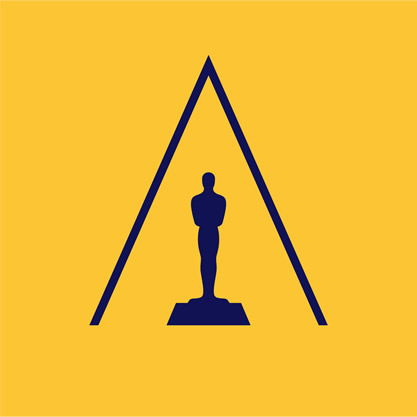
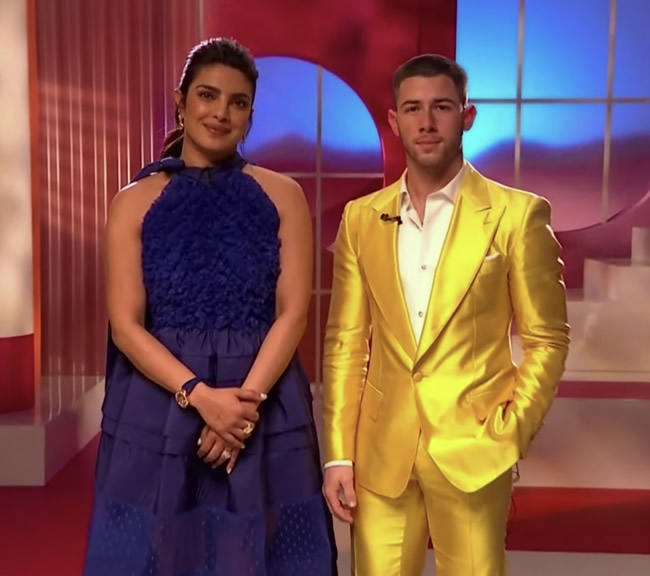
Photo: Priyanka Chopra Jonas and Nick Jonas announce the nominees for the 93rd Annual Academy Awards on Monday, March 15, 2021. Image credit: A.M.P.A.S.
LOS ANGELES, CA - Actor-producer Priyanka Chopra Jonas and singer, songwriter and actor Nick Jonas announced the 93rd Oscars® nominations today (March 15), live from London, via a global live stream on Oscar.com, Oscars.org, the Academy’s digital platforms, an international satellite feed, and broadcast media.
Priyanka Chopra and Nick Jonas announced the nominees in 23 categories at 5:19 a.m. P.T.
Academy members from each of the 17 branches vote to determine the nominees in their respective categories — actors nominate actors, film editors nominate film editors. In the Animated Feature Film and International Feature Film categories, nominees get selected by a multi-branch screening committee vote. All voting members are eligible to choose the Best Picture nominees.
Active members of the Academy are eligible to vote for the winners in all 23 categories beginning Thursday, April 15, through Tuesday, April 20.
⢠Nominations for the 93rd Academy Awards
⢠Performance by an actor in a leading role
⢠Performance by an actor in a supporting role
⢠Performance by an actress in a leading role
⢠Performance by an actress in a supporting role
⢠The best animated feature film of the year
⢠Achievement in cinematography
⢠Achievement in costume design
⢠Achievement in directing
⢠Best documentary feature
⢠Best documentary short subject
⢠Achievement in film editing
⢠The best international feature film of the year
⢠Achievement in makeup and hairstyling
⢠Achievement in music written for motion pictures (Original score)
⢠Achievement in music written for motion pictures (Original song)
⢠Best motion picture of the year
⢠Achievement in production design
⢠Best animated short film
⢠Best live-action short film
⢠Achievement in sound
⢠Achievement in visual effects
⢠Adapted screenplay
⢠Original screenplay
The 93rd Oscars will be held on Sunday, April 25, 2021, at Union Station Los Angeles and the Dolby Theatre at Hollywood & Highland Center in Hollywood. The event will be televised live on A.B.C. at 8 p.m. ET/5 p.m. P.T. The Oscars also will be televised live in more than 225 countries and territories worldwide.
Source: Academy of Motion Picture Arts and Sciences
|GlobalGiants.Com|
Edited & Posted by the Editor | 9:19 AM | View the original post


Geneva, March 12, 2021 - The World Health Organization (WHO) today listed the COVID-19 vaccine Ad26.COV2.S, developed by Janssen (Johnson & Johnson), for emergency use in all countries and COVAX roll-out. The decision comes on the back of the European Medicines Agency (EMA) authorization, announced yesterday.
“Every new, safe and effective tool against COVID-19 is another step closer to controlling the pandemic,” said WHO Director-General, Dr. Tedros Adhanom Ghebreyesus. “But the hope offered by these tools will not materialize unless they are made available to all people in all countries. I urge governments and companies to live up to their commitments and to use all solutions at their disposal to ramp up production so that these tools become truly global public goods, available and affordable to all, and a shared solution to the global crisis.”
The vaccine from Janssen is the first to be listed by WHO as a single dose regimen, facilitating vaccination logistics in all countries. The company’s comprehensive data from large clinical trials shows that the vaccine is effective in those 18 years of age and older.
To expedite the vaccine’s listing, WHO and a team of assessors from all regions adopted an ‘abbreviated assessment’ based on outcomes of the EMA review and evaluation of quality, safety, and efficacy data focused on low- and the middle-income country needs. The WHO assessment also considered suitability requirements such as cold chain storage and risk management plans.
While the vaccine needs storage at -20 degrees, which may prove challenging in some environments, we can keep it for three months at 2-8ðC, and it has a long shelf life of two years.
Next week, WHO will convene its Strategic Advisory Group on Immunization Experts to formulate recommendations on using the vaccine. In the meantime, WHO continues to work with countries and COVAX partners to prepare for roll-out and safety monitoring. The COVAX Facility has booked 500 million doses of the vaccine.
⢠WHO emergency use listing
The emergency use listing (EUL) procedure assesses novel health products’ suitability during public health emergencies. The objective is to make medicines, vaccines, and diagnostics available as rapidly as possible to address the crisis while adhering to stringent criteria of safety, efficacy, and quality. The assessment weighs the threat posed by the emergency and the benefit that would accrue from using the product against any potential risks.
The EUL pathway involves a rigorous assessment of late phase-II and phase-III clinical trial data and substantial additional data on safety, efficacy, quality, and a risk management plan. Independent experts and WHO teams review this data, consider the current body of evidence on the vaccine under consideration, monitor its use, and plan further studies.
As part of the EUL process, the company producing the vaccine must generate data to enable full licensure and WHO prequalification. The WHO prequalification process will assess additional clinical data generated from vaccine trials and deployment on a rolling basis to ensure the immunization meets the necessary standards of quality, safety, and efficacy for broader availability.
WHO has also listed the Pfizer/BioNTech, Astrazeneca-SK Bio, and Serum Institute of India vaccines for emergency use.
Source: WHO
|GlobalGiants.Com|
Edited & Posted by the Editor | 6:34 AM | View the original post
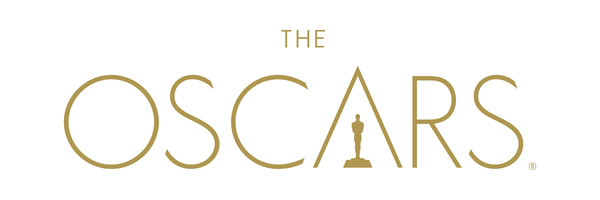
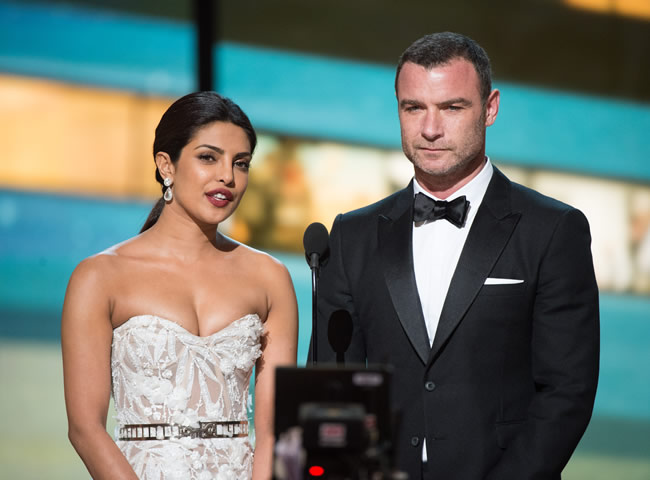
Photo: Priyanka Chopra and Liev Schreiber during the live ABC Telecast of The 88th Oscars at the Dolby Theatre in Hollywood, CA, on Sunday, February 28, 2016. Photographer: Aaron Poole. Image provided by & copyright © A.M.P.A.S. [File Photo]
Los Angeles, CA, Monday, March 11, 2021 — Actor-producer Priyanka Chopra Jonas (“The White Tiger”) and singer, songwriter, and actor Nick Jonas (“Kingdom”) will announce the 93rd Oscars nominations in all 23 Academy Award categories in a two-part live presentation on Monday, March 15. The Academy would broadcast the event via global live stream on Oscar.com, Oscars.org, the Academy’s digital platforms - Twitter, YouTube, Facebook - NY, LA Switch pool ports, and satellite downlink feed.
⢠First Presentation
⢠Second Presentation
The 93rd Oscars will be held on Sunday, April 25, 2021, and will be televised live on ABC at 8 p.m. ET/5 p.m. PT. The Oscars also will be televised live in more than 225 countries and territories worldwide.
Source: Academy of Motion Picture Arts and Sciences
|GlobalGiants.Com|
Edited & Posted by the Editor | 9:45 AM | View the original post
All Garnier products, globally, are now officially cruelty-free. The brand has received the stamp of approval from the Cruelty-Free International Leaping Bunny program, the leading organization working to end animal testing.
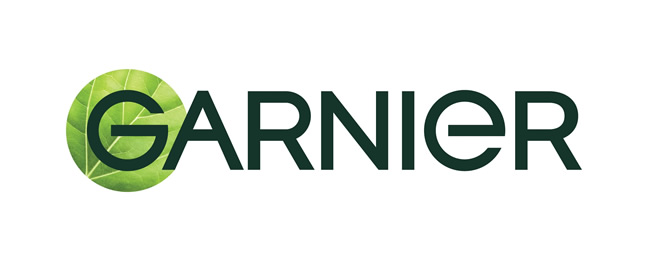

NEW YORK, March 9, 2021 — Garnier is one of the largest global brands Cruelty-Free International has ever approved under the Leaping Bunny program. It is a giant leap, not only for Garnier but also for the beauty industry.
” Garnier is a global brand familiar to us all. To work with them to help end animal testing for cosmetics and declare them officially approved under the Cruelty-Free International Leaping Bunny Program is a real milestone. It has taken many months, but Garnier has diligently reviewed every supplier and source, and we are completely confident with the results,” said Michelle Thew, Cruelty-Free International CEO.
Leaping Bunny requires brands to forensically investigate their entire supply chain, including all raw material and different ingredients, for any cases of animal testing. All of a brand’s finished products must receive approval. Individual products cannot get approved in isolation.
For Garnier, this was a case of securing a declaration from more than 500 suppliers, who source more than 3,000 different ingredients from across the world. For many months Garnier and Cruelty-Free International have worked together to secure this evidence and ensure every product within Garnier’s global portfolio can officially display the Cruelty-Free International Leaping Bunny logo. This stringent process ensures that consumers can buy Garnier products with complete confidence, knowing that they meet Leaping Bunny’s strict criteria.
” Garnier has been committed to a world without animal testing. To be officially approved by Cruelty-Free International under the Leaping Bunny program is a real milestone and is an important part of our Greener Beauty mission to be a more sustainable, more transparent brand. Today Garnier takes another Green step in its journey toward Greener Beauty for all of us,” said Adrien Koskas, Garnier Global Brand President.
This announcement from Garnier comes off the back of a landmark year for the brand. In 2020, Garnier announced their commitment to Greener Beauty.
This announcement also comes amidst a wave of sustainable innovations. Each innovation underpins the Greener Beauty commitments of the brand and is now all officially approved by Cruelty-Free International under the Leaping Bunny program:
Garnier Green Labs Serum Creams: Vegan formulas, no animal-derived ingredients, free of parabens, mineral oils, and dyes, and made in facilities powered by 59%% renewable energy, and packaged in 100% PCR bottles.
Garnier SkinActive reusable Eco-Pads: Zero cotton-pad waste pads for makeup removal.
Garnier Whole Blends Sulfate-Free Remedy: Blended with sustainably sourced ingredients and formulated without sulfates, phthalates, parabens, mineral oil, petrolatum, dyes, and gluten, and packaged in 100% PCR bottles.
Garnier Fructis Treats: Formulas are 94% biodegradable with 96-98% naturally-derived ingredients packaged in 100% PCR bottles.
Garnier Fructis Sleek & Shine: Packaged in 100% PCR bottles.
Garnier, a L’Oréal USA brand, was developed in 1904 in France by hair care expert Alfred Amour Garnier and is now present in more than 65 countries worldwide.
Cruelty-Free International is the leading organization working to create a world where nobody wants or believes we need to experiment on animals.
Source: Garnier
|GlobalGiants.Com|
Edited & Posted by the Editor | 2:56 AM | View the original post
⢠Americans divided on whether their state is handling the COVID-19 pandemic well, a U.S. News survey found.


Photo: Seattle, Washington State, USA. Image Credit: Ron Clausen.
WASHINGTON DC, March 9, 2021 — Washington State is the Best State in the country, according to the 2021 U.S. News Best States rankings. U.S. News & World Report, a global authority in rankings and civic journalism, evaluated all 50 states across various categories to capture how they best serve their citizens. Washington is among the top 10 states in the infrastructure, education, economy, fiscal stability, and health care categories.
“I am so happy for the people of Washington to take home this honor for the second time in three years because it takes all 7.6 million of us to make this state the dynamic place it truly is,” said Washington Gov. Jay Inslee. “Washingtonians are motivated to lead and innovate in all aspects of our society, in labor, business, education, health, and so much more. It was that same spirit that helped us bounce back from being the first state in the nation hit by COVID-19, and we are on our way to a robust recovery because of our unique attributes.”
Key Findings in the 2021 Best States Rankings:
For the second edition in a row, Washington is the No. 1 state in the country. Washington’s low-carbon energy system and robust secondary education continue to rank among the nation’s best, as does the state’s economy, the fastest growing in the country. Following the Evergreen State in the overall rankings is Minnesota at No. 2 and Utah at No. 3.
Hawaii leads the way in health care. At No. 1 overall in this category, the Aloha State also ranked No. 1 in health care quality, No. 1 in health care access, and No. 6 in public health. It also takes the top spot in several health care metrics, including child wellness visits, health care affordability, and preventable admissions.
The best states for public safety and corrections are in the Northeast. New Hampshire is the top state for crime and corrections, followed by Maine, Vermont, Massachusetts, and New Jersey to round out the top five.
Utah is the best state for the economy, with Colorado coming in at No. 2 and Idaho at No. 3. All three states are experiencing growth in different ways: Utah sees an increase in its young population (ages 25-29), Colorado’s employment rate has risen, and Idaho’s overall population is expanding.
Americans are divided on their state government’s handling of the COVID-19 pandemic. In a national survey conducted by U.S. News, 44.15% of respondents agreed that their state handled it well, 40.47% disagreed, and 15.38% were neutral.
Other top performers: New Jersey is No. 1 for education, Nevada is No. 1 for infrastructure, Alaska is No. 1 for fiscal stability, Iowa is No. 1 for opportunity, and Hawaii is No. 1 for the natural environment.
“The COVID-19 pandemic and evolving social climate of the past year have made a host of critical issues top of mind for Americans. The issues include access to adequate health care and quality education to economic stability and public safety,” says Kim Castro, editor and chief content officer at U.S. News. “The 2021 Best States report combines data-driven journalism and rankings to help citizens, business leaders, and policymakers see where states stack up on key benchmarks - so that states can learn from each other and target areas for improvement.”
The Best States rankings are the centerpiece of the U.S. News Best States portal, a platform combining analysis, daily reporting, historical information, and photos on state issues. The interactive Data Explorer tool allows citizens and government leaders to draw comparisons between their states and others through more than 100,000 charts. Best States is part of U.S. News’s expanding civic journalism portfolio, including the Best Countries report, Healthiest Communities project, and Cities initiative, the company elaborated.
2021 Best States Rankings
Overall - Top 25
Crime & Corrections
Economy
Education
Environment
Fiscal Stability
Health Care
Infrastructure
Opportunity
U.S. News & World Report is a global leader in quality rankings that help people make better, more informed decisions about important issues affecting their lives. A digital news and information company focused on Education, Health, Money, Travel, Cars, and News, USNews.com provides consumer advice, rankings, and analysis to serve people making complex decisions. Founded in 1933, U.S. News has its headquarters in Washington, D.C.
Source: U.S. News & World Report
|GlobalGiants.Com|
Edited & Posted by the Editor | 5:27 AM | View the original post

Photo: UNESCO Headquarters, Paris. Commemoration of the 60th anniversary of the signing of the OECD Convention. Image provided by & copyright © UNESCO/Christelle ALIX. [File Photo]
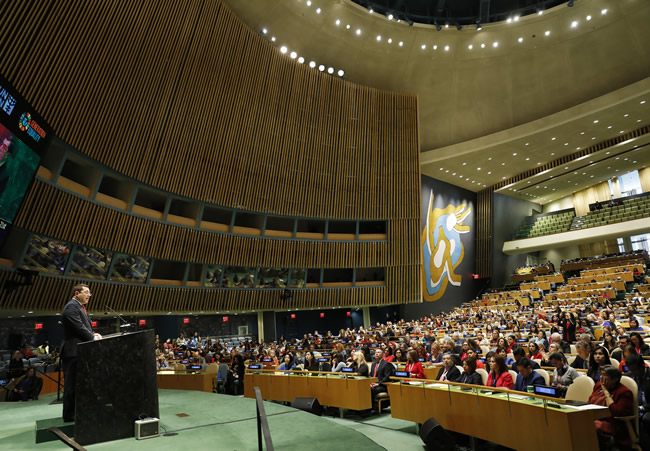
Photo: Scenes from the United Nations Observance of International Women’s Day 2020, held in the UN General Assembly Hall at UN Headquarters in New York on 6 March 2020. Image provided by & copyright © UN Women/Ryan Brown. [File Photo]
Paris, France, March 8, 2021 — On International Women’s Day, UNESCO launched the call for nominations for the 2021 UNESCO Award for Girls’ and Women’s Education. The Prize awards US$ 50,000 annually to two laureates making outstanding efforts in favor of girls’ and women’s education.
Amid the COVID-19 pandemic and in a context where girls and women have been disproportionately impacted by nationwide school closures, ensuring that girls and women continue learning must be a priority. UNESCO estimates that over 11 million girls and young women may not return to school following the pandemic’s impact. About 128 million girls were already out of school before the pandemic, UNESCO said.
The Prize is more significant in these challenging times than ever before. Highlighting innovations that can help us foster an equal future is key to responding to global challenges around girls’ and women’s education, UNESCO added.
OFFICIAL INVITATION
“Governments of the UNESCO Member States and non-governmental organizations (NGOs) in official partnership with UNESCO are now invited to nominate up to three individuals, institutions, or organizations who have made substantial, innovative contributions in favor of girls and women’s education.
“Interested candidates are invited to contact their country’s National Commission for UNESCO/Permanent Delegation to UNESCO or an NGO in official partnership with UNESCO for more information.
“Nominations must meet the eligibility and selection criteria set by the Prize. Nominated projects must be established and running for at least two years, show potential to be replicable and scalable, and contribute to one or more of the priority areas of the Prize.
“An independent International Jury of five experts will assess nominations based on the project’s potential for impact, innovation, and sustainability.
“Deadline for submissions is 26 May 2021 (midnight, Paris time).
“Nominations must be submitted in English or French via an online platform, accessible only to National Commissions for UNESCO/Permanent Delegations to UNESCO and NGOs in official partnership with UNESCO.
“Based on the recommendations of the Jury, the Director-General of UNESCO will announce the 2021 laureates who will receive the award on 11 October 2021 as part of International Day of the Girl Child celebrations.”
Source: UNESCO
|GlobalGiants.Com|
Edited & Posted by the Editor | 8:27 AM | View the original post

NEW BRUNSWICK, N.J., March 6, 2021 — Johnson & Johnson has announced that the U.S. Centers for Disease Control and Prevention’s (CDC) Advisory Committee on Immunization Practices (ACIP) has recommended its first single-shot COVID-19 vaccine. The committee has prescribed it for individuals 18 years of age and older under the Emergency Use Authorization (EUA) issued by the U.S. Food and Drug Administration (FDA).
“For more than 130 years, Johnson & Johnson has come to the aid of people during times of crisis. We believe today’s recommendation from the CDC to begin use of our vaccine as part of the U.S. national immunization program will add a critical tool in the fight against COVID-19,” said Paul Stoffels, M.D. He is Chief Scientific Officer at Johnson & Johnson. “This recommendation follows the FDA’s decision to grant an Emergency Use Authorization for our single-shot vaccine, which has the potential to play a pivotal role in helping to end the COVID-19 pandemic.”
The Company’s single-shot COVID-19 vaccine received EUA from the FDA on February 27, 2021. The terms of the EUA allow the use of the vaccine while more data gets gathered. The Company plans to file for a Biologics License Application (BLA) with the FDA later in 2021.
“Johnson & Johnson is committed to making its COVID-19 vaccine available on a not-for-profit basis for emergency pandemic use. The Company has begun shipping its COVID-19 vaccine and expects to deliver enough single-shot vaccines by the end of March to enable the full vaccination of more than 20 million people in the U.S. The Company plans to deliver 100 million single-shot vaccines to the U.S. during the first half of 2021. The U.S. government will manage allocation and distribution of the vaccine in the U.S.,” the company stated.
Johnson & Johnson also recently announced its submission of a European Conditional Marketing Authorisation Application to the European Medicines Agency and its filing for an Emergency Use Listing with the World Health Organization (WHO) for its COVID-19 vaccine candidate. Also, rolling submissions for the single-dose COVID-19 vaccine candidate have been initiated in several countries worldwide.
The Johnson & Johnson COVID-19 single-dose vaccine is compatible with standard vaccine storage and distribution channels with ease of delivery to remote areas. The vaccine is estimated to remain stable for two years at -4ðF (-20ðC), and a maximum of three months at routine refrigeration at temperatures of 36-46ðF (2 to 8ðC), the company said.
The company’s Janssen COVID-19 vaccine leverages the AdVac® vaccine platform. The program had used this proprietary technology to develop and manufacture Janssen’s European Commission-approved Ebola vaccine regimen and construct its investigational Zika, RSV, and HIV vaccines.
Johnson & Johnson’s Janssen COVID-19 vaccine has not been approved or licensed by the U.S. Food and Drug Administration (FDA), but FDA has allowed its Emergency Use Authorization (EUA).
Source: Johnson & Johnson
|GlobalGiants.Com|
Edited & Posted by the Editor | 12:59 PM | View the original post

Photo: Comedian/Writer Nick Teplitz introduces the 2015 Miss Universe contestants during the Welcome Event at Planet Hollywood Resort & Casino on Monday, December 7, 2015. Photographer: Matt Petit. Image provided by & copyright © The Miss Universe Organization, New York. [File Photo]

Photo: Pia Alonzo Wurtzbach, Miss Universe Philippines 2015, poses for a photo inside Planet Hollywood on Wednesday, December 9, 2015. Photographer: Matt Petit. Image provided by & copyright © The Miss Universe Organization, New York. [File Photo]
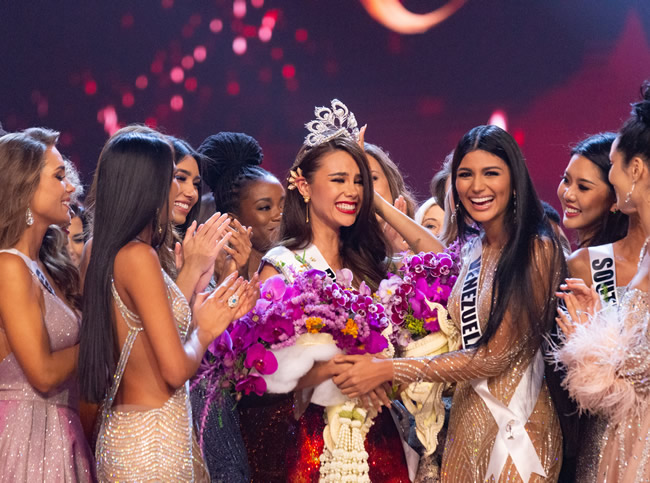
Photo: Catriona Gray, Miss Universe Philippines 2018, is congratulated by fellow contestants after being crowned Miss Universe after a three-hour special programming event on FOX on Sunday, December 16, 2018, Bangkok, Thailand. Photographer: Amorn Pitayanant. Image provided by & copyright © The Miss Universe Organization, New York. [File Photo]
NEW YORK, NY, March 4, 2021 — The Miss Universe Organization today announced that the 69th MISS UNIVERSE Competition would air from the Seminole Hard Rock Hotel & Casino Hollywood on Sunday, May 16, 2021. The competition will broadcast LIVE around the world from 8:00 to 11:00 PM ET.
“We have spent months planning and preparing safety precautions to develop this edition of MISS UNIVERSE—one that will be memorable, special, and innovative,” said Paula M. Shugart, president of the Miss Universe Organization. “I look forward to seeing this work come to fruition and crowning a new Miss Universe in May.”
The three-hour event will feature women representing dozens of countries competing in multiple categories, including the personal statement, swimsuit, evening gown, and interview. The event would end with Zozibini Tunzi crowning her successor.
“I always knew that my reign as Miss Universe would be unlike any other,” said Tunzi. “While it was nothing like what I had imagined my year to be, this year has opened doors for me I could never have imagined. I am so grateful for the opportunity to connect virtually with people worldwide and elevate the causes I care most about.”
Seminole Hard Rock’s Safe & Sound protocols follow similar guidelines as enacted successfully during the 2020 MISS USA Competition, produced in Memphis, Tennessee, in November. These policies include mask usage, social distancing, quarantining upon arrival, and rigorous testing in coordination with health officials.
The show will air in over 160 countries and territories across the globe.
Source: The Miss Universe Organization
|GlobalGiants.Com|
Edited & Posted by the Editor | 3:28 AM | View the original post
Rankings for Ease of Living Index 2020 and Municipal Performance Index 2020 announced.
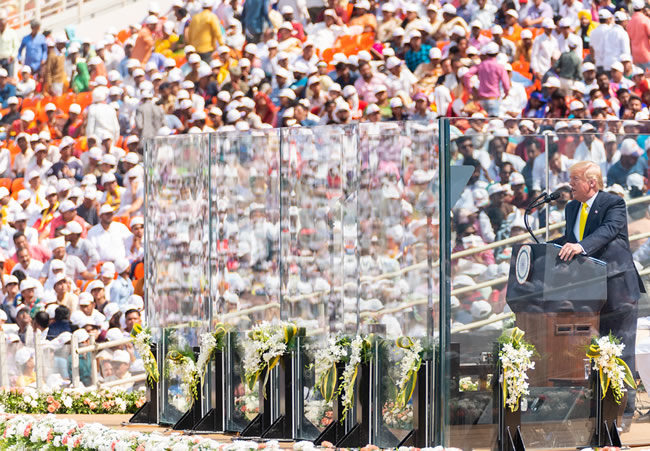
Photo: Ahmedabad, India. President Donald J. Trump addresses his remarks at the Namaste Trump Rally Monday, February 24, 2020, at the Motera Stadium in Ahmedabad, India. (Official White House Photo by Shealah Craighead). [File Photo]
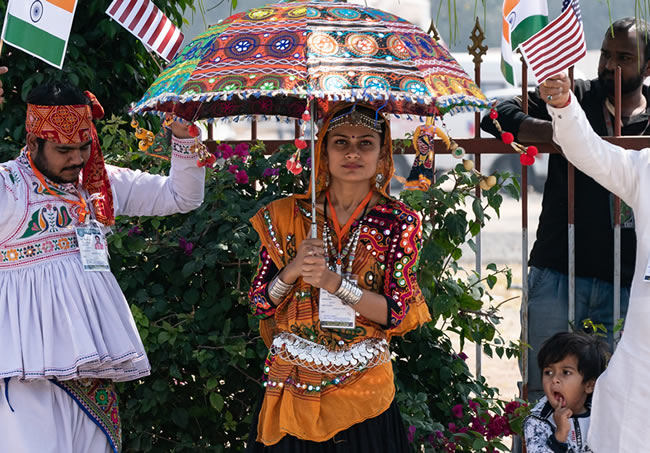
Photo: Ahmedabad, India. President Donald J. Trump and First Lady Melania Trump are cheered and welcomed by crowds Monday, February 24, 2020, along the motorcade route in Ahmedabad, India. (Official White House Photo by Andrea Hanks). [File Photo]
New Delhi, March 04, 2021 — Mr. Hardeep Singh Puri, Minister of State Housing and Urban Affairs, announced the Ease of Living Index (EoLI) 2020 and the Municipal Performance Index (MPI) 2020 here today.
The Government announced the rankings under Ease of Living Index 2020 for cities with more than a million and towns with less than a million people. One hundred eleven municipalities participated in the assessment exercise.
Bengaluru emerged as the top performer in the Million+ category, followed by Pune, Ahmedabad, Chennai, Surat, Navi Mumbai, Coimbatore, Vadodara, Indore, and Greater Mumbai.
In the Less than Million category, Shimla was ranked the highest in ease of living, followed by Bhubaneshwar, Silvassa, Kakinada, Salem, Vellore, Gandhinagar, Gurugram, Davangere, and Tiruchirappalli.
Like the EoLI index, the assessment framework under MPI 2020 has classified municipalities based on their population- Million+ (cities having over a million people) and Less than Million Population. In the Million+ category, Indore has emerged as the highest-ranked municipality, followed by Surat and Bhopal. In the Less than Million category, New Delhi Municipal Council has emerged as the leader, followed by Tirupati and Gandhinagar.
The Ease of Living Index (EoLI) is an assessment tool that evaluates the quality of life and the impact of various initiatives for urban development. It provides a comprehensive understanding of participating cities across India based on the quality of life, the city’s economic-ability, and its sustainability and resilience. The assessment also incorporates the residents’ view on the services provided by city administration through a Citizen Perception Survey.
The Ease of Living Index strengthens its scope by consolidating the framework with a Citizen Perception Survey in the index, holding a weightage of 30%. It examines the outcomes that lead to existing living conditions through pillars of Quality of Life, Economic Ability, and Sustainability. That analysis spans 13 categories, including Education, Health, Housing and Shelter, Mobility, Safety and Security, Recreation, Level of Economic Development, Economic Opportunities, Environment, Green Spaces and Buildings, Energy Consumption, and City Resilience. These account for 70% of the overall outcome.
⢠Ease of Living Index
⢠Top 25 Cities (Million+ Category)
Source: Ministry of Housing & Urban Affairs, India
|GlobalGiants.Com|
Edited & Posted by the Editor | 9:58 AM | View the original post
⢠Bloomberg Philanthropies will award up to 20 U.S. cities Asphalt Art Initiative grants for arts-driven street redesigns that improve safety, revitalize public spaces, and engage local communities.
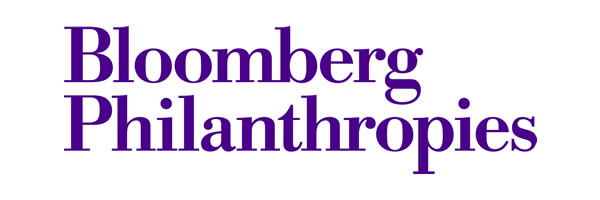
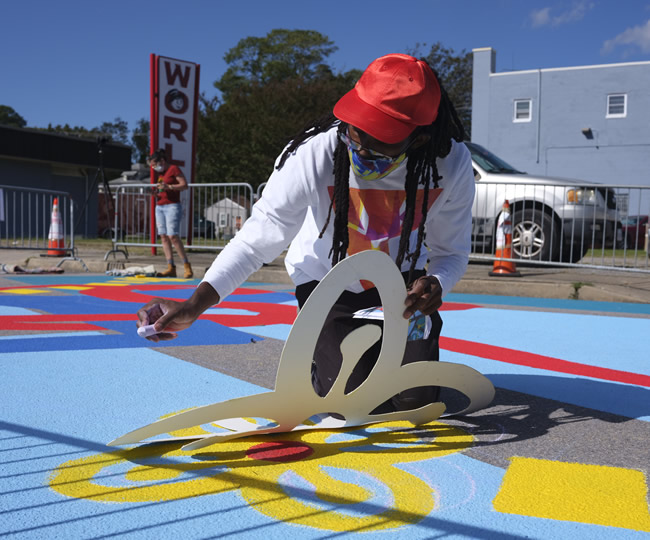
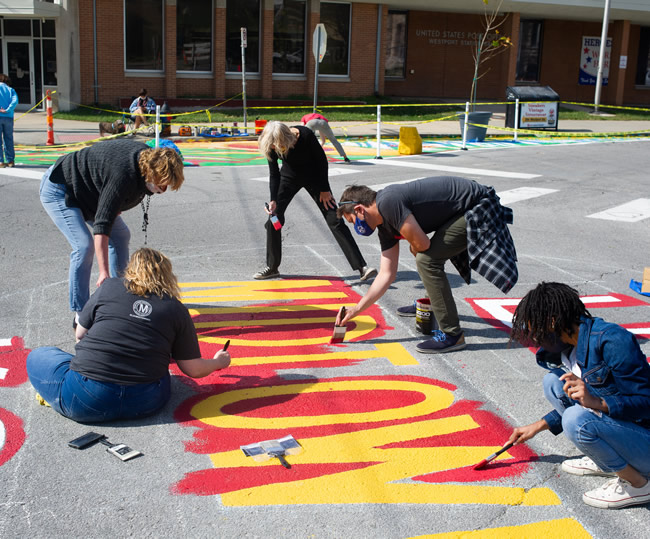
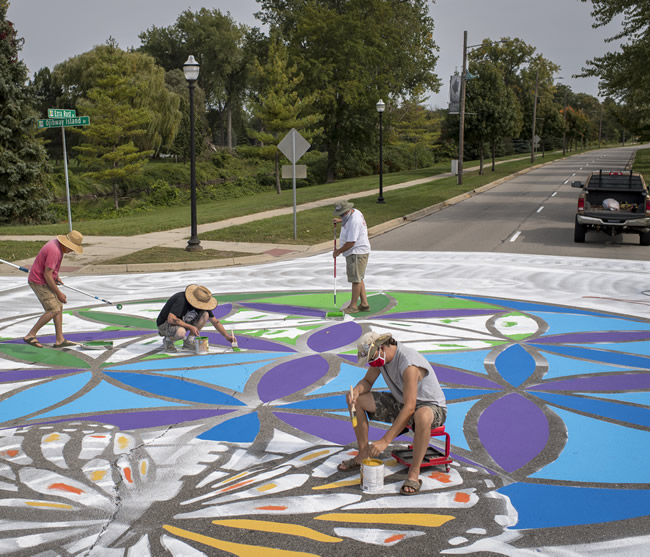
Photos: Asphalt Art Initiative projects in Norfolk, Kansas, and Saginaw. Images provided by Bloomberg Philanthropies.
NEW YORK, March 3, 2021 — Bloomberg Philanthropies today announced that cities can now apply for Asphalt Art Initiative grants. The grants will provide as many as 20 U.S. cities up to $25,000 each for projects that use art and design to improve street safety, revitalize public spaces, and engage residents of their communities. This program announced at the Bloomberg CityLab 2021 global cities summit got inspired by work done to improve pedestrian safety and revitalize New York City streets during Michael R. Bloomberg’s tenure as Mayor from 2002-2013.
“Asphalt Art Projects can help cities rebuild from the pandemic by reinvigorating streets and making them safer, while also lifting spirits,” said Michael R. Bloomberg, founder of Bloomberg Philanthropies. “As we’ve seen through our work in cities around the world, vibrant public artwork and smarter street design can inspire residents, build relationships between artists and the community, and help cities recover stronger than before.”
The grant program creates vibrant new public spaces and builds city capacity for working with artists and community groups on projects involving transportation infrastructure. Bloomberg Philanthropies’ Asphalt Art Initiative responds to the growing number of cities worldwide embracing art as an effective and relatively low-cost strategy to activate their streets, with interventions on plazas and sidewalks, crosswalks and intersections, and other transportation infrastructure.
In this second round, all United States cities are welcome to apply from March 2 to April 30, 2021. The program would announce the winning cities in fall 2021.
This next phase comes as the first round of 16 grantees, announced in June 2020, continue to roll out their projects. The cities of Kansas City, Missouri, Saginaw, Michigan, and Norfolk, Virginia, installed projects in the fall of 2020. They have transformed a combined 20,000 square feet of the streetscape with artwork and engaged nearly 1,000 residents and 37 artists in the design and installation process. Kansas City’s redesign of a problematic intersection also reduced overall vehicle speeds by 45 percent, shortened pedestrian crossing distances by 50 percent, and increased the number of pedestrians who feel safe crossing the meeting by 40 percent. The remaining cities, which will install their projects throughout 2021, include:
The first round of the Asphalt Art Initiative grant coincided with the Asphalt Art Guide’s publication. It presents case studies and best practices from cities around the world. The Guide has been accessed more than 4,500 times by governments and other practitioners in all 50 U.S. states and 83 countries.
“Adapting our cities post-pandemic isn’t just a question of engineering or epidemiology, but imagination. By bringing light, color, and creativity to blacktop, asphalt art projects can bring people together after so much time apart and breathe new life into our cities and our streets,” said Janette Sadik-Khan, Principal for Transportation at Bloomberg Associates. “From open streets to outdoor dining, this past year has made the importance of the public realm clearer than ever, and this program will help cities coast to coast make their streetscapes as vibrant as the communities that come together to create them.”
“At a time when the pandemic has limited so many kinds of interaction, asphalt art can provide a safe way to champion and enjoy a community’s creativity,” said Kate D. Levin, Principal for Cultural Assets Management at Bloomberg Associates. “Our inaugural projects have also catalyzed cross-sector collaborations among city agencies, neighborhood groups, and artists that can help support longer-term recovery. We are thrilled to extend this opportunity to more cities.”
Bloomberg Philanthropies invests in 810 cities and 170 countries worldwide to ensure better, longer lives for the most significant number of people. The organization focuses on five critical areas for creating lasting change: the Arts, Education, Environment, Government Innovation, and Public Health. Bloomberg Philanthropies encompasses all of Michael R. Bloomberg’s giving, including his foundation, corporate, and personal philanthropy, as well as Bloomberg Associates, a pro bono consultancy that works in cities around the world. In 2020, Bloomberg Philanthropies distributed $1.6 billion.
Bloomberg Associates is the philanthropic consulting arm of Michael R. Bloomberg’s charitable organization, Bloomberg Philanthropies. Founded in 2014, it works side-by-side with client cities to improve residents’ quality of life, taking a strategic, collaborative, and results-oriented approach to making cities healthier, safer, more equitable, and efficient.
Source: Bloomberg Philanthropies
|GlobalGiants.Com|
Bloomberg Philanthropies invites U.S. Cities to Apply for Asphalt Art Grants.
Edited & Posted by the Editor | 1:29 AM | View the original post
 |
 |
